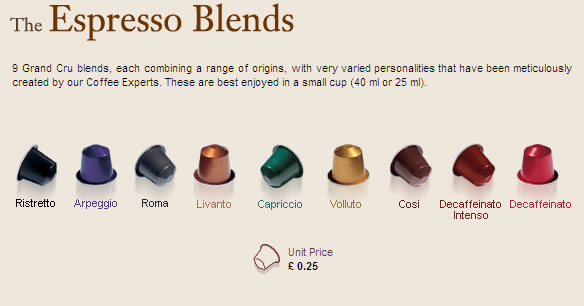How much do you care about
terroir? How much does anyone really care about terroir? Now, just to make sure
we are talking about the same thing, my definition of 'terroir' includes the
soil, aspect, altitude and microclimate that all essentially contribute to
individuality. And, if we agree on that, I know for a fact that Heston Blumenthal has a patchy interest in it, as do some highly distinguished
members of the wine industry in places like Burgundy, Bordeaux and Champagne as
well as the heads of several award winning wine companies.. Whatever they might say to the contrary. As for normal consumers, even the ones who take a keen interest in what they eat and
drink, pay it very little attention.
Now, I know that even by my
standards this is a contentious statement, but I have tangible evidence to
support my case.
So, here goes. Terroir
definitely exists and is undeniably crucially - influential in the way a wine
tastes. It is not - despite what some chauvinist Frenchmen have suggested -
exclusive to France. Vineyards in places from Turkey to Tasmania have
individual, influential terroirs. With me so far?
But terroir is also not
limited to wine. Malt whiskies are influenced by the water from the local
spring; coffee and tea to the humidity and altitude of the places where the
beans and leaves are grown. Chocolate, cheese, honey and perhaps most clearly
of all, olive oil, all bear the imprint of the place they come from. Olive oil
comes top of this list because, as Chiara Planeta who is passionately involved
with the award-winning oils produced by her family company in Sicily, points
out, if you make it honestly, there's almost no human intervention. You simply
harvest the olives - earlier rather than later, ideally - and extract the oil
as quickly as possible after they leave the tree.
Fine olive oil is, in its
way, as fine and noble a product as any wine, and just as ancient. And most people take
zero interest in its terroir. When I say "most people", I'm not
talking about ignorant British or American consumers for whom olive oil is a
foreign ingredient; I'm talking about the Sicilians who do their shopping down
the road from the olive groves and use huge amounts of olive oil every day. Not
only do they not take any interest in which part of Sicily their oil comes
from, most don't even really care whether the stuff on their salad is actually
Italian. Most of the oils on sale in the two supermarkets I visited have brand
names like Bertolli and are bottled in Italy but generally hail from groves in
Spain or Greece or Portugal. In each of the shops, Sicilian oil represented a
tiny minority of what was on offer. Sicilian housewives evidently choose their
oil on the basis of its house style and price. In one little shop in a small
village, there were two oils on the shelf: a Bertolli at five euros and a
Sicilian for four euros fifty. The shopkeeper approved of my choice of the
local oil, but evidently still needs to stock the global brand.
.JPG)
.JPG)
This focus on style is even
more evident elsewhere in Italian food shops. Italians care about coffee. And
I'd say they probably care more about it than people in many other countries.
But, here again, they show no interest in where it comes from. What they buy is
the brand - Illy, Lavazza, Hag etc - and the level of strength which is
helpfully indicated in at least one set of shops, by a set of colour codes. A
British shopper used to the Costa Rican, Colombian and Brazilian coffees on
offer in their local store would be staggered at the absence of any reference
to provenance. What Sicilian shoppers buy is various versions of what
Anglo-Saxons know as "Italian-blend".
The wall of coffee - and the Lavazza reference to its multi-country sourcing
I did see one reference to
country: almost every Italian store has Lipton's English Breakfast Tea. Sadly,
I was unable to discover precisely where in these lovely islands, the tea
plantations might have been situated.
Now, at this point, I can
hear a number of people angrily pointing out that their Italian friends DO care
about tea and coffee and olive oil, and that the people who shop in
supermarkets are just the ignorant masses. To which I would counter that these
are precisely the same masses we expect to pay attention to wine terroir.
But here I return to my
original contentious contention that a great many people whose livelihoods
depend on a belief in wine terroir have absolutely zero interest in the way
regionality applies to coffee. I know this because they have demonstrated it by
their actions: they have spent their money - a lot of money in some cases - on a
Nespresso machine - or one of its competitors.
Now, for anyone who has led a
sheltered life, I'll briefly explain that these are devices that were developed
at huge expense by Nestle to enable ordinary mortals to produce espresso coffee
of a guaranteed style, quality and consistency. The system is highly ingenious:
the coffee comes in little metal pods (“capsules”) whose colours and shape show
the same kind of design flair as anything to come out of Apple or Bang &
Olufssen. All you have to do to be sure of getting your desired cup of caffeine
(or decaffeinated, naturally) is to choose the colour that relates to the style
you want, pop it into the machine and press the button. Buying a Nespresso
machine is a little like getting married: the expression “forsaking all others”
springs to mind as one realizes that, until the patents run out, the only place
one can buy pods that fit in it is directly from Nespresso shops or online.
The range is not huge. Just three of the pods are
described as “Pure Origin” – Dulsão do Brasil, Indriya from India and Rosabaya de
Colombia. The others - Ristretto, Arpeggio, Roma, Decaffeinato Intenso, Livanto,
Capriccio, Volluto, Cosi, Fortissio Lungo, Vivalto Lungo, Finezzo Lungo and Decaffeinato
Lungo – could come from anywhere coffee is grown. They conform to the
explanation on an Italian Lavazza packet that the origin may vary in order to maintain
the consistency of the product.
For a while, I tried to keep
a rough tally of the number of Nespresso machines I encountered and the places
where I found them. But after I hit my fourth Bordeaux chateau, third Champagne
house and fifth head of a UK wine company, I gave up. They are becoming
ubiquitous, with sales rising by 20% per year over the last decade. According
to Nestle, over 21% of all espresso machines are now Nespressos, while a number
of alternatives such as Sara Lee’s Senseo and Kraft’s Tassimo all make their
own inroads into the tradition of selecting one’s own coffee from a range on a
retailer’s shelf.
I must confess to having
rather mixed feelings about these machines. I don't like the idea of having to
buy all my coffee from one producer; I don't like being restricted to a limited
range; I don’t like the fact that they cost up to thrice what one might pay for
good coffee purchased by the bag; and I don’t like the fact that all those pods
have to be recycled - or sent to landfill.
On the other hand I am really
rather grateful for the fact that almost everywhere I go, people offer me
pretty good coffee, and don't have to go to any great trouble to prepare it.
Now I know that Nespresso
machines are, in the words of one coffee lover, treated as the devil's work by
his fellow enthusiasts. And I know that there is a keen band of people out
there who care passsionately about the coffee they drink, choosing their beans with
care and possibly even doing the roasting themselves. But these are an
infinitely tiny minority of coffee drinkers.
Most people appreciate the
simplicity of buying by style and colour. So how does this apply to wine? Well,
people are increasingly purchasing their wines by brand rather than country
(think of Lindemans, Blossom Hill and Ogio in the UK and think of all those bottles
of“Californian” branded wines whose contents are sourced from Chile or France.
So far, they haven’t often
been offered the chance to use a colour code when choosing their wine, but I
can see this option developing too. I have recently done some interesting
consultancy work with the Australian brand McGuigan on a range of colour-coded
“Classic” wines that applies Nespresso thinking and the line "What's your style?". Some 9,000 people scanned a QR
Code in a magazine - and just under 3,000 very happily shared their tastes for “fresh”, "spicy", "intense" etc. The McGuigan wines are from Australia, but I'd be surprised if a similar concept could not be successfully applied by a multi-national brand such as Ogio.
The place
something comes from is either important -
commercially speaking - or it's not. And, judging by the way people,
ranging from Sicilian housewives to Bordeaux chateau owners vote with
their wallets, there are plenty of instances in which it really does not matter at all. And least anybody suggest the contrary, the argument that terroir
matters more to wine than to, say, coffee is intellectually indefensible.
It's like saying that one can be prejudiced against a person's religion but not
her skin colour.
Traditionalist wine folk will hate this
theme and say that people really should care about teroir, but I’d recommend that they wake up and smell the (origin-irrelevant) coffee.
In response to comments that this post lacks a conclusion, I've decided to add one here:
People like me have historically applauded retailers for the diversity of their ranges - and lamented when they, and producers, have moved towards simplification. We have wilfully overlooked the fear that the "Wall of Wine" engenders in a huge number of consumers. I now believe that we have been talking to ourselves (an endemic problem in our industry). Perhaps it is time - at the more basic, daily-drinking end of the market - for producers and retailers to embrace options such as doing away with vintage variation and introducing colour/style coding as a means of making daily drinking wine as easy to buy as coffee,




.JPG)
.JPG)
.JPG)
.JPG)
.JPG)




















